In partnership with Disrupting JAPAN (日文版 EP2)
J-STORIES與向海外介紹日本創新新創企業的人氣Podcast節目【Disrupting JAPAN】進行內容合作,將推出最新集數及過去精彩集數的翻譯摘要版。值得紀念的第一集,介紹了以「為所有人賦予行動力」(Powering Mobility for All)為使命,專門開發和銷售提升下肢截肢者行動力的機器人義足的 BionicM株式會社。完整版內容(英文版 Podcast)可透過以下連結收聽。


前言
本期節目專訪2015年創立BionicM公司的創辦人孫小軍先生。孫先生幼時因意外失去肢體,促使他投入義肢技術研發領域。創業至今,他已成功將公司從初創階段發展為具規模的企業。
本次訪談將深入探討:孫先生為將創新醫療技術成功商業化所面臨的各項挑戰、分析日本學術機構雖具備先進技術卻在產業化過程中遭遇困難的原因,以及探討全球義肢技術發展長期存在的觀念誤區等議題。此次對談內容豐富精彩,值得關注。
Podcast 本集內容簡介
《Disrupting Japan》節目專門邀請日本最成功的企業家進行深度訪談。本期節目聚焦於仿生義肢(Bionic Leg)。這是一種由電池驅動的小腿義肢,目前已被全球許多截肢者所使用。
受訪者為BionicM公司創辦人暨執行長孫小軍先生(英文名Sunny)。孫先生於9歲時因意外失去右腳,隨後投入長達15年的技術研發,最終成功實現突破。BionicM為日本新創企業,該公司不僅專注於開發功能完備且實用的義肢產品,更致力於打造具創新性與時尚設計感的義肢解決方案。
本次訪談將全面介紹孫先生的創業歷程與BionicM的義肢技術發展。同時,節目也將分析儘管醫療器材認證要求嚴格,但此類產品在美國市場推出相對容易的原因,並探討義肢產業在客戶需求識別方面的挑戰,以及日本大學在推動深度科技(Deep Tech)新創企業從實驗室走向市場化過程中面臨的困難。
東京大學衍生的新創企業
蒂姆:歡迎機器人義肢製造商BionicM公司創辦人暨執行長孫小軍先生接受訪問。
孫小軍:感謝邀請,很榮幸參與本次訪談。

蒂姆:那麼,BionicM 是一間什麼樣的公司呢?
孫小軍:我們是一家源自東京大學的新創企業,致力於研發電動義肢,目的是提升身心障礙者的行動能力。
蒂姆:為什麼電動義肢這麼重要?提升行動能力對使用者有什麼關鍵意義呢?
孫小軍:目前市面上的大多數義肢都是非電動的。我們正在開發的是一種具有動力、能讓使用者更輕鬆行走的義肢,這和現有產品截然不同。我相信,它將能做到現有義肢無法達成的事。
蒂姆:這是一條由電池驅動的電動馬達義肢吧?請問這款義肢能為使用者提供哪些傳統被動式義肢無法實現的功能?
孫小軍:舉例來說,有些高齡的截肢者,站起來對他們來說非常困難。若義肢無法提供適當的輔助功能,將使起身動作更加艱難。
蒂姆:我明白了。BionicM 的這款義肢具有的「肌力」,就像一般人的腿部肌肉,能夠協助站立、上下樓梯等動作。
孫小軍:沒錯。該產品具備類似肌肉的功能特性,能夠為使用者提供所需的動力支援。舉例而言,使用者在起身時可獲得義肢提供的輔助力量,使起身動作更加輕鬆,當然也能順利前往二樓或三樓。
蒂姆:了解了,非常具有魅力。關於電池驅動系統,請問充電時間需要多久?是否需要每日充電一次?畢竟使用者需要全天候使用。
孫小軍:充飽電大概需3至4小時,電池續航力可維持一整天的使用需求。
蒂姆:原來如此。那使用者只要睡前充電就可以了?
孫小軍:是的,沒錯。
蒂姆:那它的重量是多少呢?
孫小軍:大約 3 公斤左右。
蒂姆:3公斤?相當輕巧。
孫小軍:是的,我們為了輕量化下了不少功夫。
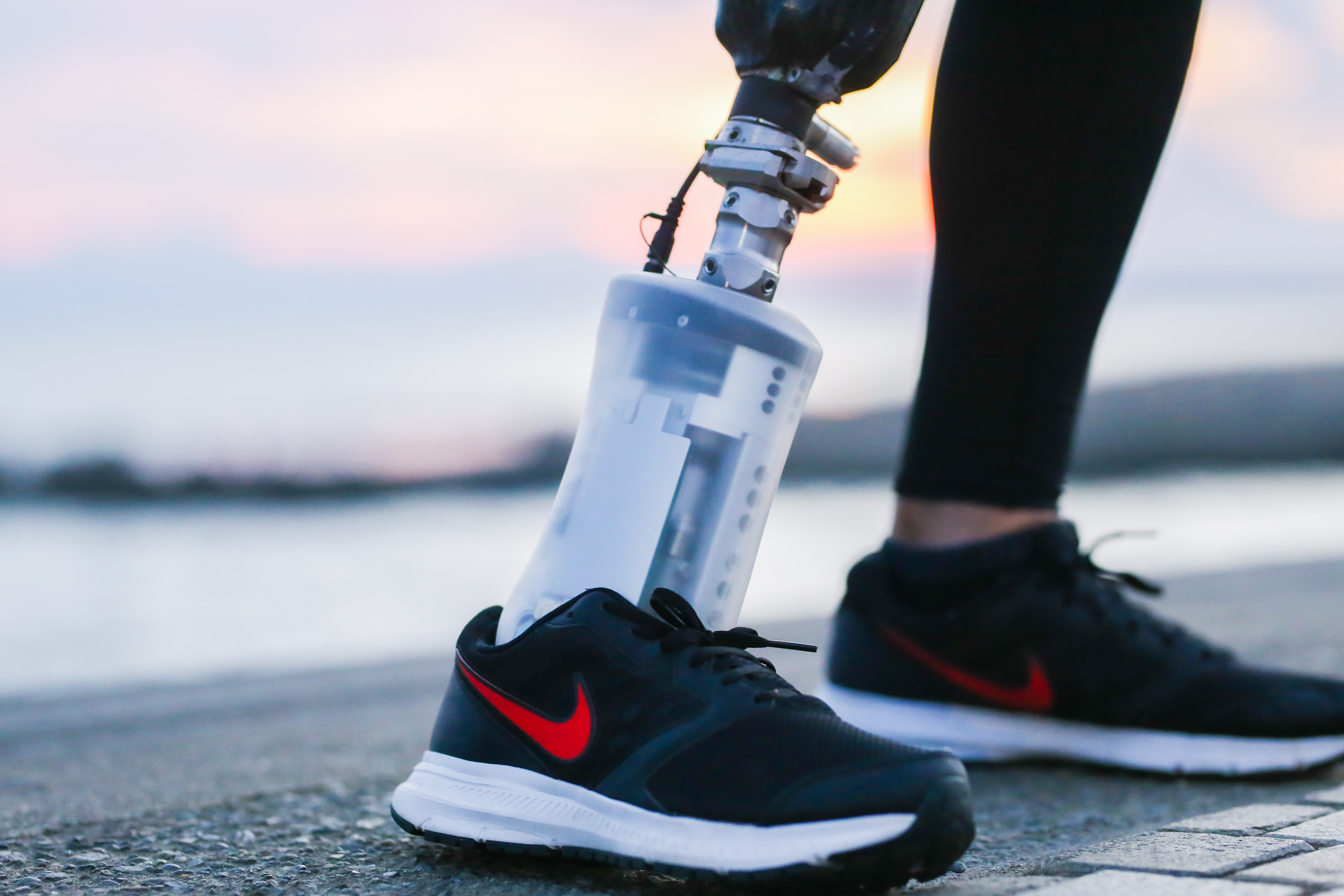
開發者、執行長,他也是首位使用者
蒂姆:能跟我們說說目前的使用者嗎?現在是哪些人在使用 BionicM 的產品呢?
孫小軍:我們今年剛完成產品化階段,目前正在美國市場進行相關業務拓展。我們希望能讓接受過截肢手術的美國使用者實際使用我們的產品。
蒂姆:所以現在還在測試與評估的階段嗎?
孫小軍:是的,目前所有測試都已經完成,預計 9 月開始量產。同時將於9月向FDA提出申請,計劃明年正式販售產品。
蒂姆:您本身就是BionicM的第一位用戶,同時也是 Beta 測試者,對吧?
孫小軍:沒錯。實際上我在大學期間就開始進行這項研究。最初我親自測試原型產品,經過多次改良。公司成立後,我也是每個新原型產品的首位使用者。目前這款原型產品我已使用超過2年。
蒂姆:為了讓聽眾理解這項技術的意義,能否請您分享個人經歷,以及為何這項技術對您具有特殊意義?
孫小軍:我在9歲時因骨癌而截除右腿。當時家庭經濟狀況無法負擔義肢費用,因此我使用拐杖生活了15年。10年前獲得赴日留學機會,那也是我人生第一次獲得義肢。那種感受非常棒,人生從此改變,雙手終於獲得自由,能夠完成過去無法做到的事情。
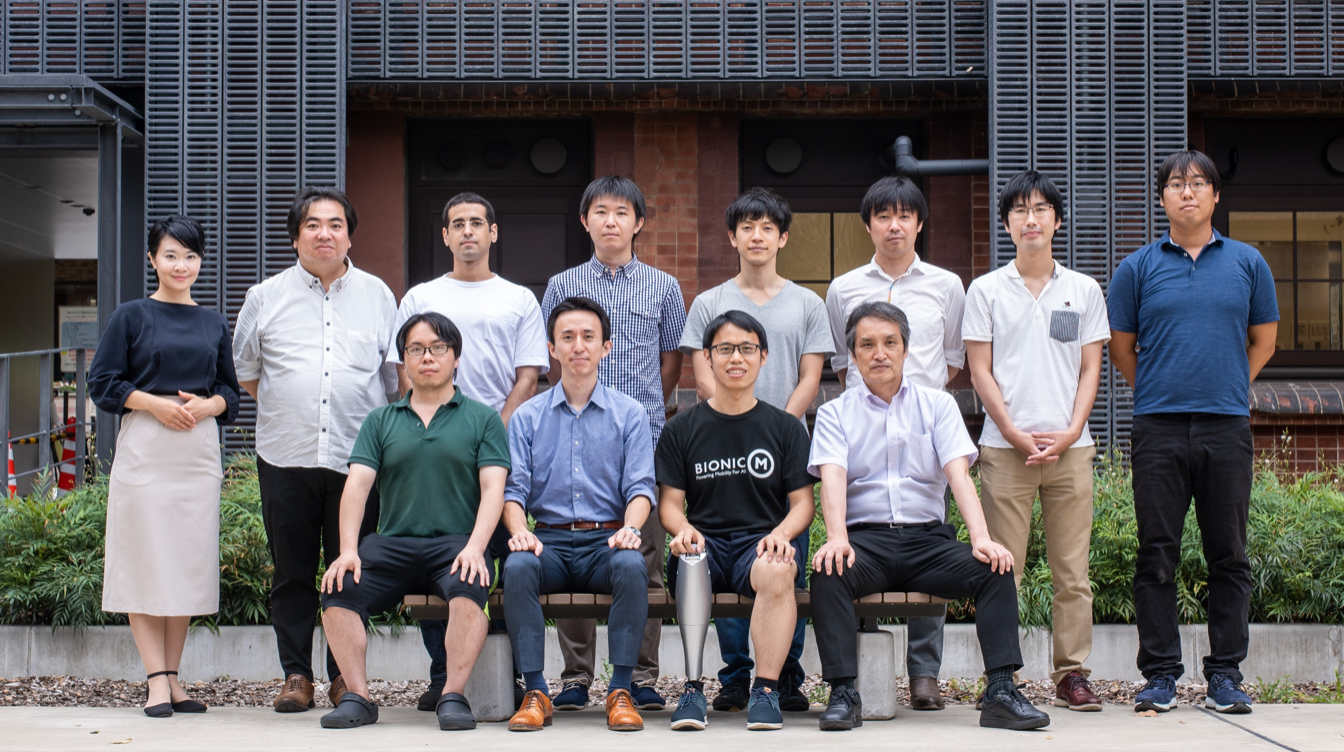
蒂姆:也就是說,您自9歲以來首次不需要使用拐杖?
孫小軍:對,撐著拐杖走路很不方便。像是下雨天根本沒辦法撐傘,也沒辦法自己拿東西去餐廳吃飯,所以真的很辛苦。
蒂姆:原來如此。那麼後來有什麼轉變呢?
孫小軍:一開始我覺得義肢很好用,但用久了之後,也發現現有產品存在不少問題。當時我在 Sony 擔任工程師,心想是否能為自己和其他人設計出更好的義肢。思考過後,我決定就是要做這件事。於是我離開公司,以博士班學生身分重返校園,在博士課程中開始進行相關研究。
蒂姆:BionicM專案始於2015年?
孫小軍:對,沒錯,是從 2015 年開始的。
蒂姆:那你是在幾年後創辦公司?
孫小軍:我於2018年取得博士學位,並在同年2018年底成立公司。
蒂姆:而且你一路上獲得了不少獎項。由於節目時間限制,無法一一列舉,但涵蓋日本國內外各項榮譽。這些獲獎經驗是否有助於海外合作夥伴關係的建立,或促成更多資金募集機會?
孫小軍:有的。首先我認識了很多人,其中也包括一些投資者,他們對我們公司的投資案表示興趣。此外,由於我們希望在多個國家拓展業務,這些人脈也為我們引薦了相關人士。透過這些機會,我們能夠認識更多人才,接觸到更多投資者。

蒂姆:那我們接下來聊聊產品本身。使用這款義肢的總費用大約是多少?
孫小軍:在美國可適用保險給付,因此使用者自付額為4萬5千美元。
蒂姆:美國售價為4萬5千美元,日本的價格也差不多嗎?
孫小軍:是的,日本的價格也大致相同。
蒂姆:聽起來是蠻高的價格,這是一般義肢的平均價嗎?
孫小軍:算是高階產品的價位了,比目前市面上的高階義肢還要更貴一些。
蒂姆:原來如此。那測試使用者的反應如何?
孫小軍:我們在日本進行了多次測試,在美國也進行了幾次測試。獲得許多正面回饋,例如使用簡便、走路不易疲勞等。過去使用傳統義肢時,像是要站起來這種動作都很吃力。
蒂姆:那這款仿生義肢在安裝時需要什麼條件嗎?是否需要依照每位使用者做客製化調整?使用者是否還需要訓練才能上手?整個流程是怎麼進行的?
孫小軍:我們的產品採標準化設計,即大量生產而非客製化,但由於每位截肢患者的身高不同,因此在配置過程中需要部分客製化調整。我們將產品銷售給義肢裝具師診所,由他們為終端使用者進行客製化服務。他們會製作稱為「承窩(Socket)」的介面元件,連接身體與義肢系統。也就是說,他們會客製化製作承窩,再搭配我們相同的膝關節元件。因此,我們並非直接銷售給終端使用者,而是銷售給義肢裝具師診所。
誰才是真正的顧客?
蒂姆:其實這正是我一直想問你的問題之一。在這個產品的行銷過程中——我們知道誰是使用者,但從某種意義上來說,誰才是真正的「顧客」?是誰決定要購買這個產品?是醫師?還是義肢技師?又或者,最終真正掌握決定權的是使用者本人呢?
孫小軍:在美國,這類產品屬於醫療器材,必須由醫師開立處方。因此,最後的決定權是屬於醫師的。不過,大多數醫師其實對義肢並不太熟悉,需要仰賴稱為CPO(義肢裝具師)的技術人員提供專業建議。CPO負責進行配戴調整,並選擇適合的膝關節元件。CPO會與使用者詳細討論,評估使用者的活動程度、身體狀況、殘肢情況,以及未來希望使用何種義肢等因素。他們會全面了身障使用者的需求並提供建議,隨後將建議傳達給醫師。醫師會開立處方,再由保險公司審核。
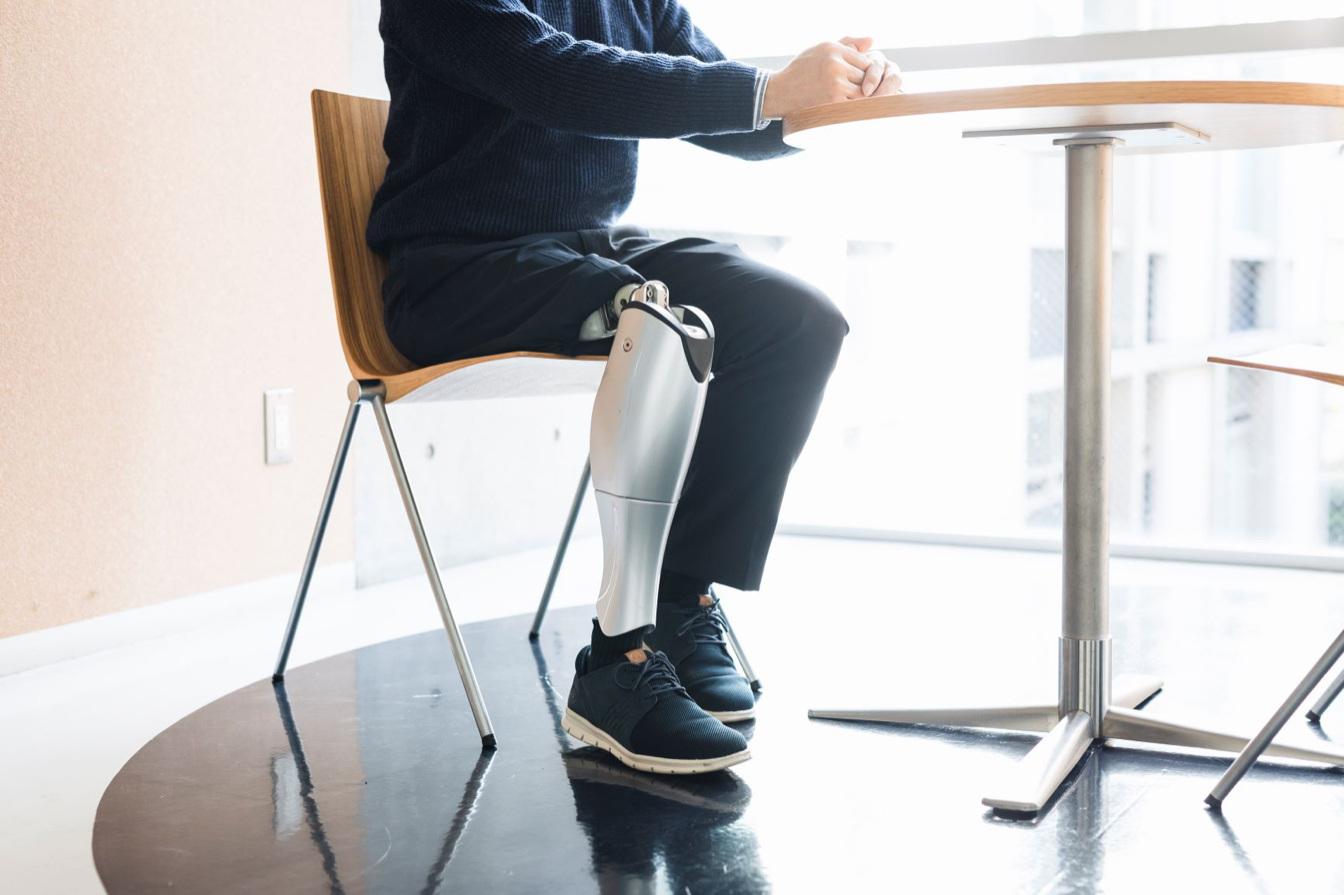
蒂姆:也就是說,打入市場的關鍵在於爭取技術人員的支持,並讓他們真正理解這項產品的價值,對嗎?
孫小軍:沒錯,正是如此。技術人員是整個流程中最關鍵的人物,最終是他們決定要使用哪一款產品。
蒂姆:這在世界各地都一樣嗎?在日本也是這樣的嗎?
孫小軍:在日本和美國的情況基本上是一樣的。
蒂姆:那麼,義肢裝具要在日本和美國獲得醫療器材認證,需要什麼程序?
孫小軍:其實,在日本這類產品本身就已經被歸類為醫療器材,嚴格來說不需要額外的認證。產品銷售相對簡單,不需要通過繁瑣的審查程序。
蒂姆:那在美國呢?
孫小軍:在美國也是醫療器材,但如果產品要納入保險給付範圍,就必須通過 FDA(美國食品藥品管理局)的認證。在日本,雖然販售相對容易,但高價產品若沒有保險給付,也不容易推廣。
蒂姆:你之前提到正在申請上市許可。什麼時候會拿到認證並正式上市呢?
孫小軍:我們的目標是在明年 5 月前正式推出產品。
蒂姆:那你們會怎麼銷售?是與大型醫療器材公司合作?還是直接賣給診所?
孫小軍:目前我們正努力與美國的公司洽談合作。如果合作不順利,也考慮直接將產品提供給診所。
蒂姆:換言之,各市場的銷售計劃都相當類似?首要選擇是尋找醫療器材銷售合作夥伴?
孫小軍:是的。我們的首選策略是尋找醫療器材經銷商,將所有產品銷售給經銷商,再由經銷商銷售給診所。
義肢市場規模達4000萬人
蒂姆:那麼,這個市場有多大呢?雖然把它稱作「市場」感覺有點奇怪,但實際上能夠幫助多少人?
蒂姆:是四千萬人嗎?
孫小軍:是的,是個相當驚人的數字。
蒂姆:那麼,在這些人當中,有多少人實際上裝了義肢呢?
孫小軍:各國情況差異很大。在已開發國家中,有些國家50%的截肢者使用義肢,有些國家則是30%。
蒂姆:那麼,舉例來說,美國市場和日本市場的情況如何呢?大約有多少人?
孫小軍:我們針對美國市場進行了調查,發現包括膝上截肢和膝下截肢在內,約有200萬名截肢者。
蒂姆:BionicM 的產品在這個市場中似乎非常獨特。您已經開始開發第二代產品,外觀設計也相當出色。這是您對使用者需求的觀察嗎?雖然不想說這是時尚宣言,但確實超越了純粹的實用性和功能性。您認為使用者會喜歡升級到新版本嗎?您認為這類產品具備這種特性嗎?
重視外觀設計,將義肢打造成如眼鏡般的時尚配件
孫小軍:是的,我們非常注重外觀設計。目前市面上大多數產品外觀並不理想,使用者往往會試圖隱藏義肢。因此,我們希望做出不同的產品。我們期望這類產品能成為使用者的時尚風格和個人特色的一部分,讓使用者願意展示自己的產品時就能自然展現,進而對自己的產品產生自信。
蒂姆:這是相當獨特的設計理念。也就是說,從某種意義上來說,這代表了使用者本人的一種態度表達。
孫小軍:沒錯。我們希望能成為像眼鏡一樣的設備。過去眼鏡是為視力有障礙的人設計的,但現在大多數人都戴眼鏡,也不認為自己有任何障礙。
蒂姆:說得沒錯,眼鏡已成為時尚配件之一。
孫小軍:正是如此,就是時尚配件。因此,我們希望未來義肢能像眼鏡一樣成為時尚元素,代表時尚與個性,而非障礙。
蒂姆:這真是太棒了。那你們在新版本中,具體打算改善哪些地方呢?
孫小軍:我們的產品內建馬達,所以在使用時會發出一些聲音。我來示範一下(發出實際聲音)……有些使用者覺得這個聲音還滿酷的。
蒂姆:(笑)……有點像賽博格的聲音……
孫小軍:對,有點像機器人。但也有人不喜歡,因為他們不想讓別人知道自己裝了義肢。這種聲音會讓其他人察覺到他們使用義肢。因此,在第二代產品中,我們正在開發更安靜且能從膝關節獲得動力的產品,讓他人不會察覺使用者配戴義肢。
為擴大事業規模 成功募資3.7億日圓
蒂姆:您在今年初募集了約300萬美元資金,恭喜您。
孫小軍:謝謝您。
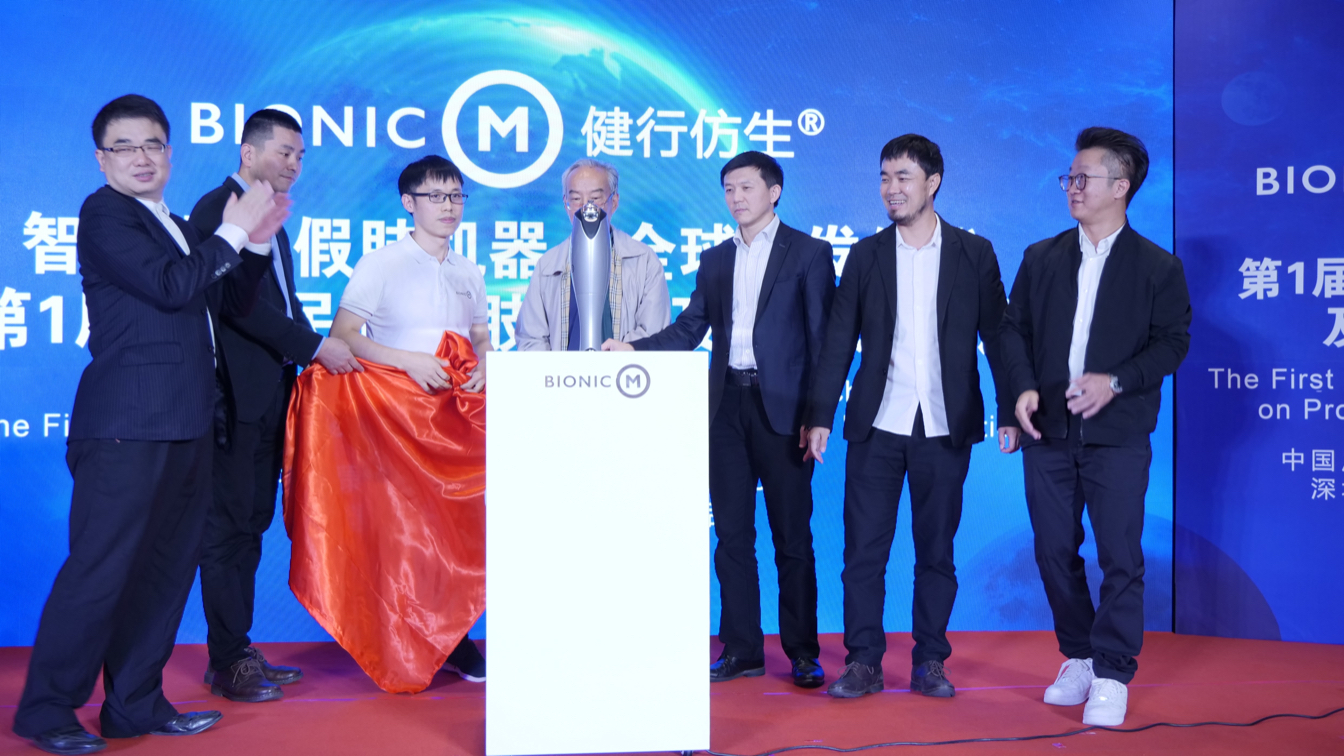
蒂姆:那麼,你們是如何運用這筆資金的呢?對 BionicM 來說,目前最優先的事項是什麼?
孫小軍:目前我們將所有資金都投入在進軍美國市場上。就像剛剛提到的,我們需要取得 FDA(美國食品藥品監督管理局)的認證,同時也需要取得保險給付認可。因此,我們現在正在準備 FDA 的申請和保險相關的手續,這些都需要大量資金。
蒂姆:能否介紹一下製造流程?產品在哪裡製造?畢竟這是極為特殊的設備。
孫小軍:雖然不便透露具體名稱,但採用類似OEM的模式。我們負責所有設計工作,再委託其他公司進行製造。
蒂姆:這些產品是在日本製造的嗎?還是在中國?
孫小軍:為了降低成本,我們選擇在中國生產。
蒂姆:了解。那你們的團隊也是分布在日本和中國嗎?
孫小軍:是的,沒錯。
蒂姆:那硬體工程團隊主要在中國嗎?還是怎麼分工的?
孫小軍:大部分工程師都在日本工作。由於他們是日本人,留在中國的工程師很少。中國團隊主要負責智慧型手機應用程式和部分製造工作。
蒂姆:那麼手機應用程式是做什麼用的呢?
孫小軍:透過智慧型手機應用程式可以檢查所有狀況,例如查看電池剩餘電量。此外,技術人員可根據每位使用者的需求,透過應用程式進行各項調整。舉例來說,如果使用者希望動作更快,技術人員可以提高動力輸出,讓使用者行動更迅速。
蒂姆:啊,我明白了。因為雖然我們每個人基本上都在「走路」,但不只身高,每個人的步態差異其實也很大。所以透過手機應用程式可以進行個別化的調整。
孫小軍:我們有一個基本模型,能適應大多數人的走路方式。但現實中,還是會有不同類型的使用者,例如活動量大的截肢者,或活動量較低的截肢者。因此我們需要根據每位使用者的需求調整參數。
蒂姆:您之前提到使用者的回饋和產品改善需求。在此之前,您也說過真正的決策者是診所的技術人員。他們是否也提供了類似的回饋?或者對未來產品有特殊需求或建議?
孫小軍:是的,技術人員也給了我們非常多的回饋。因為他們會讓使用者實際試用產品,從而了解哪些地方需要改進、這些產品能為使用者帶來哪些好處。因此,我們從技術人員那裡也收到了很多寶貴的建議與想法。
日本與日本大學為加速新創企業發展需要做些什麼?

蒂姆:那麼,讓我們談談日本和東京大學的情況。東京大學似乎對您的研究和衍生新創企業非常支持。實際上,我聽說義肢所使用的許多技術都是基於東京大學的雙足步行機器人研究。此外,東京大學還提供了研究支援和投資人脈。這似乎是個很棒的計畫。有什麼不足之處嗎?如果要讓新創企業加速發展,大學還可以做些什麼呢?
孫小軍:我認為近年來大學為了支援年輕學生創業進行了許多努力。我自己也從大學那裡得到了許多幫助。剛開始的時候,我連租辦公室的資金都沒有,但大學提供了校園內的空間讓我們使用。
蒂姆:我們現在就坐在東京大學的正中央。
孫小軍:是的,這真的非常難得。在日本,信用非常重要,年輕的公司或新創企業很難一開始就贏得信任。但如果有大學作為合作夥伴,就能獲得更多的信賴。
蒂姆:這對醫療器材或醫療領域的新創來說尤其重要吧。
孫小軍:沒錯。產品開發需要時間,也關乎人體安全。所以人們會很在意這家公司的可信度。我們是從大學衍生出來的公司,得到了很多支持,也有大學背書。對我們來說,這是非常關鍵的。
蒂姆:換言之,從大學衍生所獲得的信用和信任,是大學支援最重要的層面之一?
孫小軍:是的,我也這麼認為。
蒂姆:了解。許多大學研究人員,無論是博士生還是博士後研究員,在從大學研究轉向產品開發研究時都會受到一些衝擊。您是否經歷過這樣的轉換?還是你一開始就以產品為目標了?
孫小軍:我離開公司是因為想為自己設計更好的產品,因此在產品設計方面有一定經驗。作為博士生重返大學後,我從一開始就嘗試開發產品而非進行基礎研究,所以我和其他研究者的路線有些不同。
蒂姆:你的指導教授當時會希望你做更純粹的學術研究嗎?
孫小軍:是的。他說,如果你想要拿學位,就必須做一些基礎研究並發表論文。
蒂姆:這好像是日本大學常見的情況。研究領域明確區分為應用研究與純學術研究,而日本的大學通常是比較偏向支持純粹學術研究的。
孫小軍:沒錯。在大學裡,不管是教授還是學生,大部分時間都會投入在基礎研究上。
蒂姆:不過像是 UTEC 和其他計畫,顯然真的幫助了你,也給了你不少支持吧。
孫小軍:是的。近年來,大學方面也很希望能支持學生創業。現在有很多為想創業的學生設計的輔導與支援計畫。我自己也有參與其中,這些計畫對我創業真的幫了很大的忙。
為了讓日本的新創企業更好,應該改變的事是什麼?
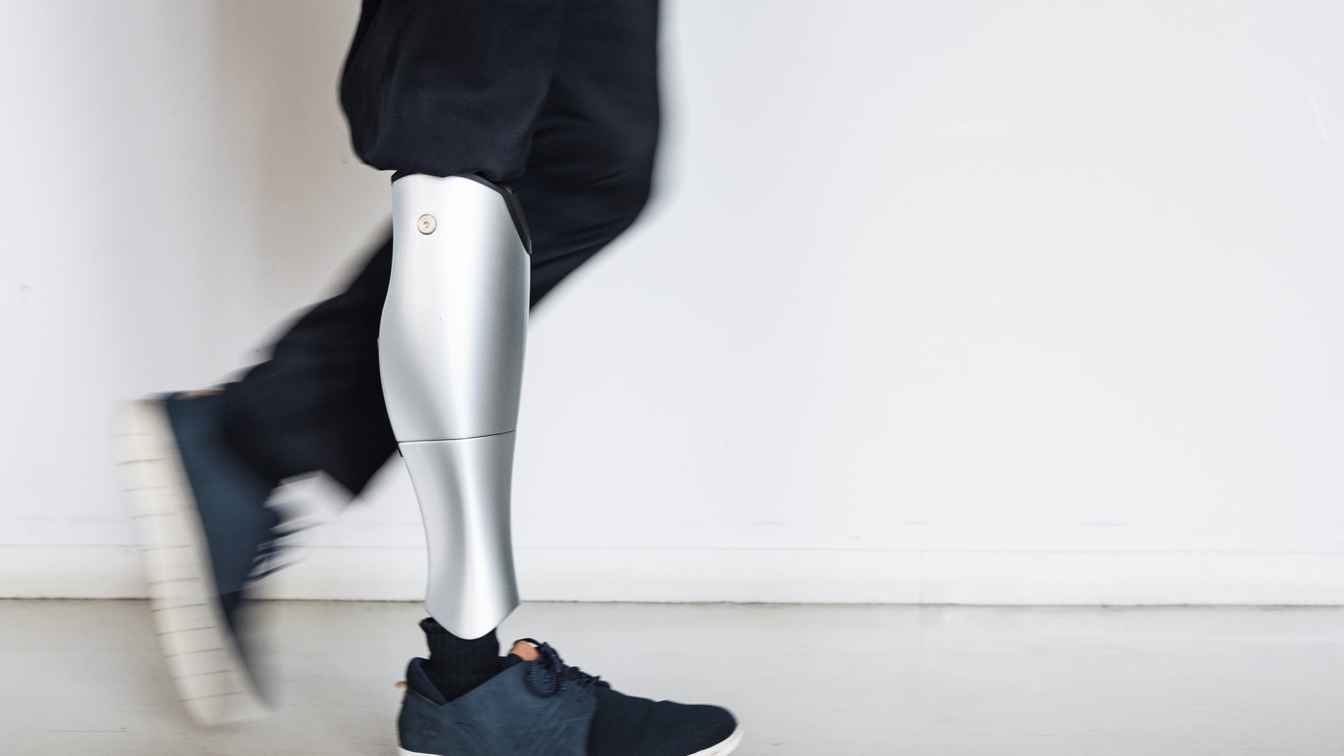
蒂姆:這真的很棒。那麼在訪談結束之前,我要問一個我稱為「魔法棒」的問題。如果我給你一根魔法棒,可以改變日本的任何一件事,無論是教育制度、國民保險機制、人們對風險的看法,或是任何能讓日本新創企業變得更好的事情,你會選擇改變什麼?
孫小軍:新創企業一開始不可能就做出完美的產品。所以我認為,顧客與社會應該對這些新創的產品更有耐心、更寬容,並給予他們時間去改善產品。
蒂姆:日本的顧客以「要求高」而聞名。
孫小軍:沒錯。
蒂姆:那如果日本的顧客能對新創技術多一些包容,事情會變得比較容易嗎?
孫小軍:是的,正如您所說,日本人真的非常挑剔。我覺得這對推動優秀產品的誕生是好事,但對新創企業而言,要開發出一個幾乎完美的產品需要時間與金錢。所以我認為,社會應該更有耐心一點。如果整個社會能更寬容,新創產業的環境一定會更好。
蒂姆:我也這麼認為。在美國,讓新創推出 MVP(最小可行產品)是很平常的事,那些產品雖然功能簡單但可用。但就我在日本的經驗來看,這樣的事似乎行不通,是嗎?
孫小軍:沒錯,在日本幾乎做不到。你必須開發出幾乎完美的產品,否則就不能提供給客戶。
蒂姆:我同意你的看法。日本的系統從長遠來看,確實能推動高品質產品的誕生,這是好事,但短期內卻會對新創公司造成很大的壓力。不過您似乎克服了這些困難並獲得成功。
孫小軍:嗯,是的,差不多是這樣。
蒂姆:是一步一步慢慢來的嗎?
孫小軍:沒錯。我們花了七年才把產品推向市場。
蒂姆:那麼,您收到了什麼回饋?使用者強烈要求什麼?
孫小軍:像我之前說的,他們希望產品的運作聲音可以更安靜。我們也持續在努力改進這方面,但的確需要時間。
蒂姆:在美國,使用者對這些聲音會更能接受嗎?
孫小軍:是的。我們在美國做過幾次測試,發現那裡的使用者對聲音的容忍度比較高。他們甚至覺得這聲音聽起來很酷,有點像機器人。
蒂姆:我懂,當你走到門口打招呼時,那聲音聽起來確實很帥。
孫小軍:這因人而異啦。
蒂姆:當然(笑)。畢竟那聲音也不是很大。我覺得這很有意思。美式作法就是:「雖然不完美,但現在這樣也不錯。」
孫小軍:在美國,有人說他喜歡這個設計,或是喜歡這種外型、這種動力輔助的方式。對他們來說這樣就夠了。噪音也許是一個問題,未來還是需要改善,但他們可以接受目前的產品。
蒂姆:我想很多創業者應該也有類似的體會。
孫小軍:是這樣嗎?
蒂姆:在日本的各行各業中都是如此。孫小軍先生,非常感謝你今天的分享。
孫小軍:謝謝您的邀請,真的很感謝。
結語
孫小軍先生的經歷清楚反映了日本大學在將深度科技(Deep Tech)研究產業化過程中面臨的核心挑戰之一。儘管潛力巨大,但正如孫小軍所經歷的,學術界往往偏好抽象的基礎研究,對真正能推動產品上市的應用工程研究卻抱有強烈的偏見。
順帶一提,BionicM 義肢的馬達聲音其實相當響亮。我原本想錄下來,但錄音當時沒有帶適合的設備。音量約與輕聲對話相當,聽起來很像《魔鬼終結者》第一集裡的 T-800。
實際上,這種未來感的機器人或生化人音效相當酷炫。然而,可以理解的是,當你走在安靜的辦公室裡,邊走邊發出這種聲音時,並不是每個人都會覺得自在。雖然是很酷的音效,但應該要有可以根據情況開關的選項。
我特別欣賞孫小軍與 BionicM 的設計理念。義肢不僅可以是一種時尚宣言,它也應該是。孫小軍先生將義肢比喻為眼鏡,這個比喻非常有道理。眼鏡早已超越了「視力補助工具」的功能定位,成為眾多全球時尚品牌競相推出鏡框的時尚單品,在時尚界佔有穩固地位。
義肢,也應該走上這樣的道路。孫小軍先生的這個願景令人感動:義肢不該只是「功能上夠用」,它應該是創新、獨特,甚至令人覺得酷的東西。對他這樣的願景,我感到非常認同。
感謝你收聽本集《Disrupting Japan》。
【本內容由東京新創企業Podcast節目《Disrupting Japan》合作提供。完整節目內容請參閱 Disrupting Japan 官方網站。】

![[PODCAST]「義肢不只是實用工具,更是一種時尚宣言」東京大學首間新創公司的挑戰](https://storage.googleapis.com/jstories-cms.appspot.com/images/1688097333972main.jpg)



![[Tokyo Updates]利用昆蟲的生物科技,將廢棄物轉化為資源](https://storage.googleapis.com/jstories-cms.appspot.com/images/1752057790117c2e348a997642a5294646228eec405cdd17ad1e2_smallthumbnail.jpg)
_bigthumbnail.jpeg)














![[PODCAST] 如何打造成功的新創企業社群(第2集)](https://storage.googleapis.com/jstories-cms.appspot.com/images/1748493203370business-man-holding-light-bulb-social-network-2024-10-31-22-37-36-utc_smallthumbnail.jpg)


